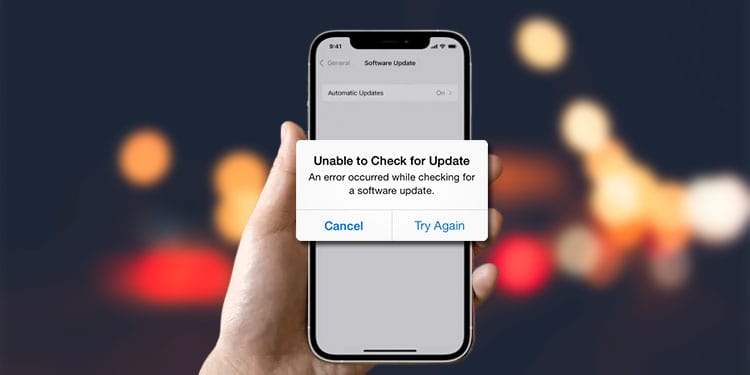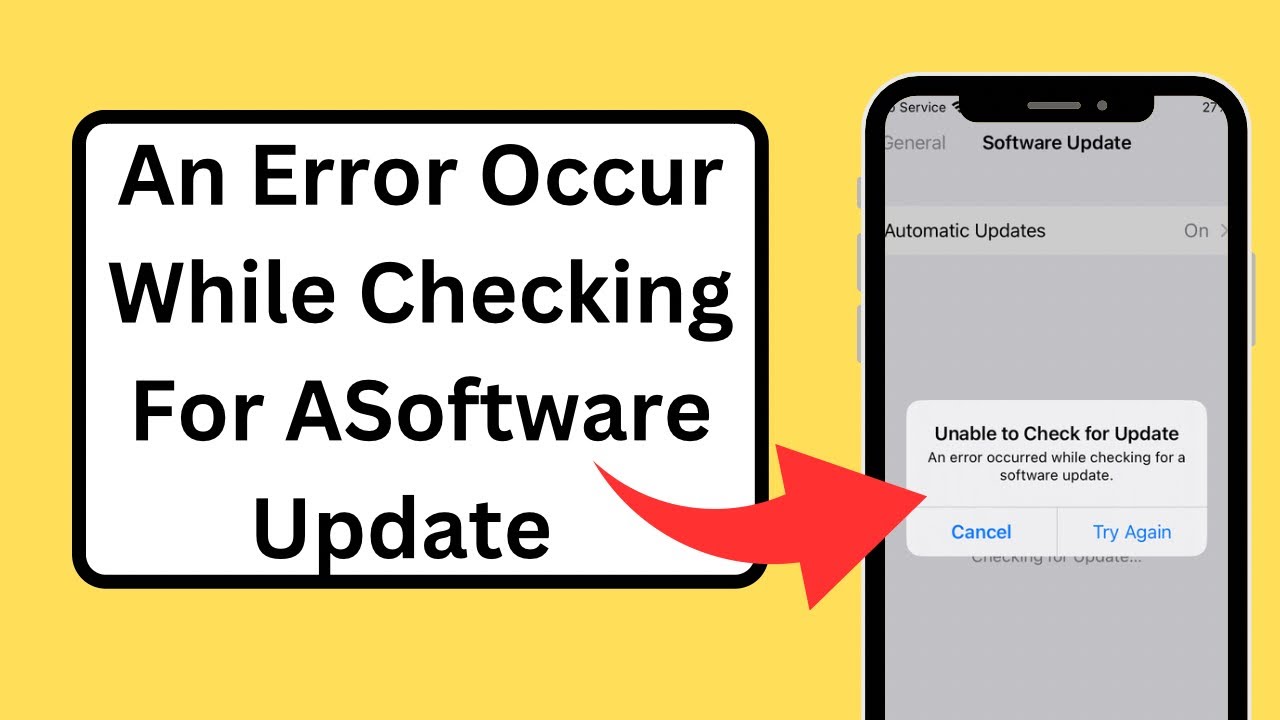An error occurred while checking for a software update. This introduction delves into the common causes, troubleshooting steps, impact, and prevention of software update errors, providing a comprehensive overview of the topic.
Common Causes of Software Update Errors
Software update errors can occur due to a variety of reasons, leading to disruptions in the update process and potentially affecting the performance of the system. Understanding these common causes can help in troubleshooting and resolving issues effectively.
System Compatibility Issues
One common reason for software update errors is system compatibility issues. Updates are designed to work with specific operating systems, hardware configurations, or software versions. If the system does not meet the requirements, errors can occur during the update process.
Internet Connection Problems
Another frequent cause of software update failures is internet connection problems. Updates are typically downloaded from online servers, and a stable internet connection is essential for the process to complete successfully. Issues such as slow or interrupted connections can lead to errors.
Insufficient Storage Space
Insufficient storage space on the device can also result in software update errors. Updates require a certain amount of free space to be downloaded and installed. If the device does not have enough storage available, the update process may fail.
Software Conflicts
Software conflicts can arise when multiple applications or programs are running simultaneously or when there are compatibility issues between different software components. These conflicts can interfere with the update process and cause errors to occur.
Troubleshooting Steps for Software Update Errors
When encountering software update errors, it is crucial to follow a systematic approach to identify and resolve the underlying issues. Below are some essential steps to troubleshoot software update errors effectively.
Step 1: Verify Internet Connectivity
Before proceeding with any troubleshooting, ensure that your device has a stable internet connection. Poor or intermittent connectivity can often lead to update failures.
Step 2: Restart the Device
Restarting your device can help in resolving temporary glitches that may be causing the software update errors. After restarting, attempt the update process again.
Step 3: Clear Cache and Data
Clearing the cache and data of the software update app can sometimes resolve issues related to update errors. This step can help in eliminating any corrupted data that might be causing the problem.
Step 4: Check Available Storage
Insufficient storage space on your device can prevent software updates from being installed successfully. Make sure you have enough free space to accommodate the update.
Step 5: Update Software Manually
If the automatic update process is failing, consider updating the software manually. Download the update package from the official website of the software provider and follow the instructions to install it.
Step 6: Contact Customer Support
If all the above steps fail to resolve the software update errors, it is advisable to contact the customer support of the software provider. They can provide further assistance and guidance in troubleshooting the issue.
Impact of Failed Software Updates: An Error Occurred While Checking For A Software Update

When software updates fail to install correctly, it can have serious consequences for both the system and the user. These impacts can range from performance issues to security vulnerabilities, making it essential to address and resolve update errors promptly.
System Performance
Failed software updates can lead to decreased system performance, causing applications to run slowly or crash unexpectedly. Incomplete updates may result in compatibility issues with other software components, leading to system instability and overall inefficiency.
Security Risks
One of the most critical consequences of failed software updates is the increased security risks associated with running outdated software. Without the latest patches and fixes, systems are more vulnerable to cyber threats such as malware, viruses, and other cyber attacks. Hackers often target outdated software with known vulnerabilities, making it crucial to keep software up to date to protect sensitive data and information.
Preventing Software Update Errors

Ensuring a smooth software update process is essential to prevent errors that can disrupt your system’s functionality. Here are some tips to help you avoid software update errors and maintain a seamless update experience.
Regularly Check for Updates
- Make it a habit to regularly check for software updates to ensure you are running the latest versions of applications and operating systems.
- Set up automatic updates whenever possible to receive notifications when updates are available.
Backup Your Data, An error occurred while checking for a software update
- Before initiating any software updates, always back up your important data to prevent any loss in case of errors during the update process.
- Use external storage devices or cloud services to securely store your data before proceeding with updates.
Stable Internet Connection
- Ensure you have a stable internet connection when downloading and installing software updates to avoid interruptions that may lead to errors.
- Avoid updating software over public Wi-Fi networks to minimize the risk of data breaches or errors caused by unstable connections.
Close Unnecessary Programs
- Prior to installing software updates, close any unnecessary programs running in the background to allocate resources effectively and prevent conflicts that could result in errors.
- Running too many programs simultaneously can lead to system slowdowns and potential update failures.
Verify System Requirements
- Check the system requirements for software updates to ensure your device meets the necessary specifications for the update to be successful.
- Installing updates on incompatible devices can lead to errors and compatibility issues.
Final Thoughts

In conclusion, understanding the reasons behind software update errors, implementing effective troubleshooting methods, and taking proactive measures to prevent such errors are crucial for maintaining system efficiency and security.
